Search Result
Results for "
binding assay
" in MedChemExpress (MCE) Product Catalog:
1
Biochemical Assay Reagents
5
Isotope-Labeled Compounds
| Cat. No. |
Product Name |
Target |
Research Areas |
Chemical Structure |
-
- HY-16999
-
-
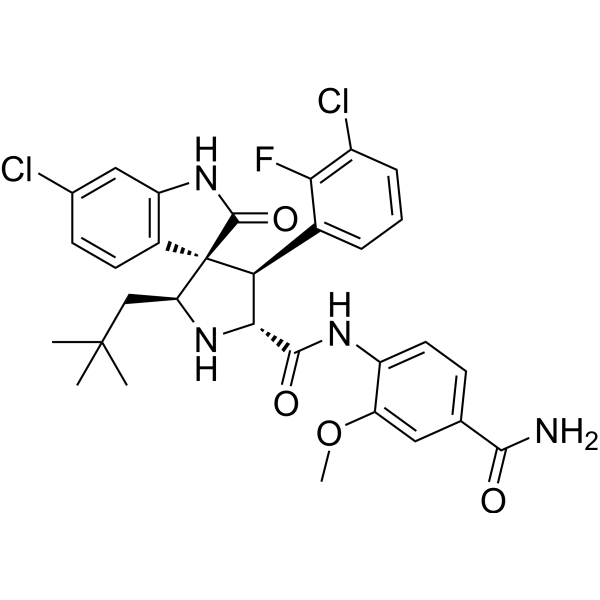
-
- HY-19381
-
-
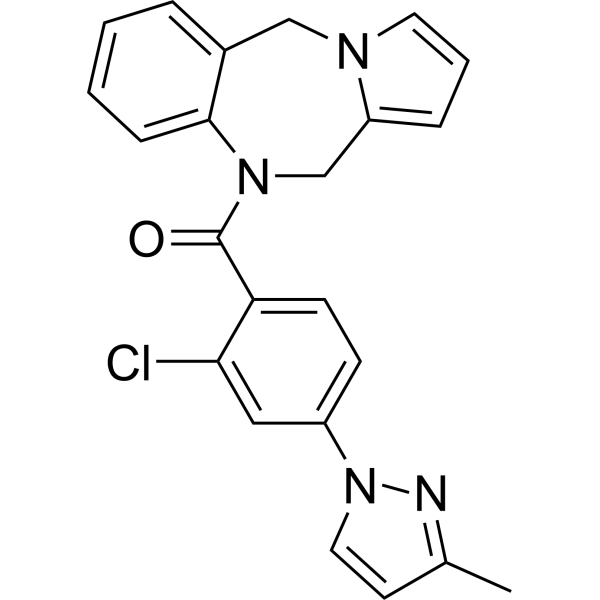
-
- HY-136379
-
|
Cdc42-IN-1
|
Ras
|
Cancer
|
|
CID44216842 (Cdc42-IN-1) is a potent Cdc42-selective guanine nucleotide binding lead inhibitor. The EC50s for Cdc42 WT and Cdc42Q61L mutant are 1.0 and 1.2 μM in GTP binding assay, respectively. The EC50s for Cdc42 WT and Cdc42Q61L mutant are 0.3 and 0.5 μM in GDP binding assay, respectively. Use as a molecular probe .
|
-

-
- HY-16582A
-
|
Erismodegib; LDE225; NVP-LDE225
|
Smo
|
Cancer
|
|
Sonidegib (Erismodegib) is a potent and selective Smo antagonist with IC50 of 1.3 nM and 2.5 nM for mouse and human Smo in binding assay, respectively .
|
-
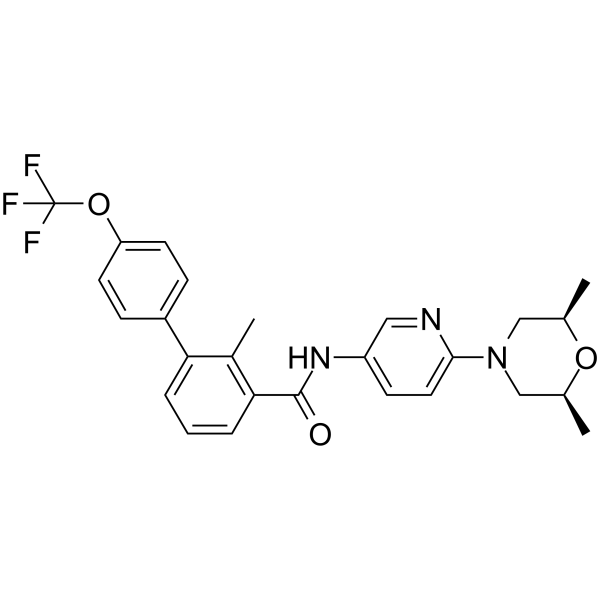
-
- HY-147366
-
|
|
Others
|
Metabolic Disease
|
|
RBP4 ligand-1 is a non-retinoid ligands for (RBP4) retinol-binding protein 4. The hRBP4SPA IC50 and RBP4–TTR FRET IC50 values are 0.23±0.11 and 0.13±0.12 μM in the radioligand binding assay and FRET assay, respectively .
|
-

-
- HY-16582
-
|
Erismodegib diphosphate; LDE225 diphosphate; NVP-LDE225 diphosphate
|
Smo
|
Cancer
|
|
Sonidegib diphosphate (Erismodegib diphosphate) is a potent and selective Smo antagonist with IC50 of 1.3 nM and 2.5 nM for mouse and human Smo in binding assay, respectively .
|
-

-
- HY-13466
-
-

-
- HY-B1486
-
|
Ba 39089
|
|
|
|
Oxprenolol hydrochloride (Ba 39089) is an orally bioavailable β-adrenergic receptor (β-AR) antagonist with a Ki of 7.10 nM in a radioligand binding assay using rat heart muscle .
|
-
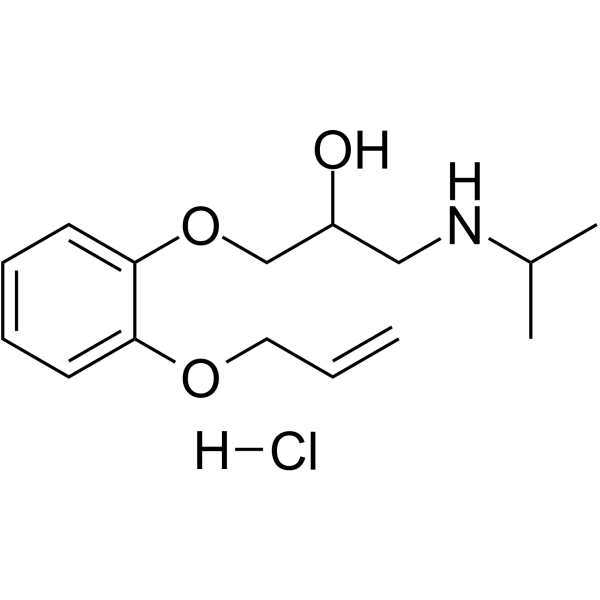
-
- HY-16582AS
-
|
Erismodegib-d4; LDE225-d4; NVP-LDE225-d4
|
Isotope-Labeled Compounds
|
Others
|
|
Sonidegib-d4 is a isotope of Sonidegib. Sonidegib is a potent and selective Smo antagonist with IC50 of 1.3 nM and 2.5 nM for mouse and human Smo in binding assay, respectively .
|
-

-
- HY-U00423
-
-
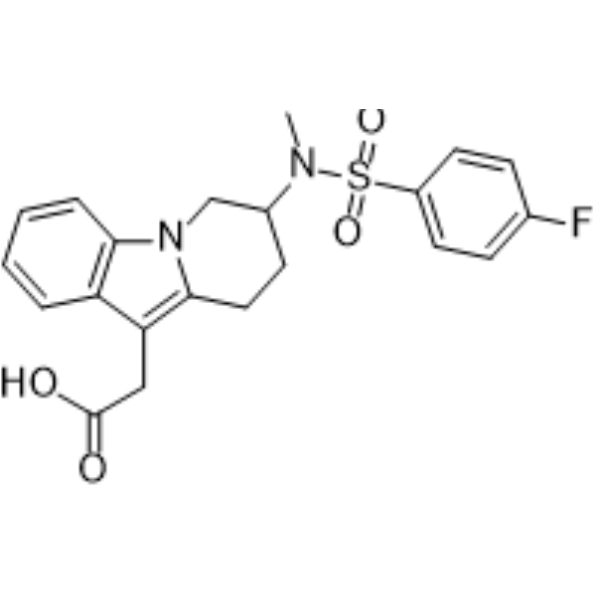
-
- HY-112157
-
|
|
Beta-secretase
|
Neurological Disease
|
|
PF-06751979 is a potent, brain penetrant, β-site amyloid precursor protein cleaving enzyme 1 (BACE1) inhibitor with an IC50 of 7.3 nM in BACE1 binding assay.
|
-
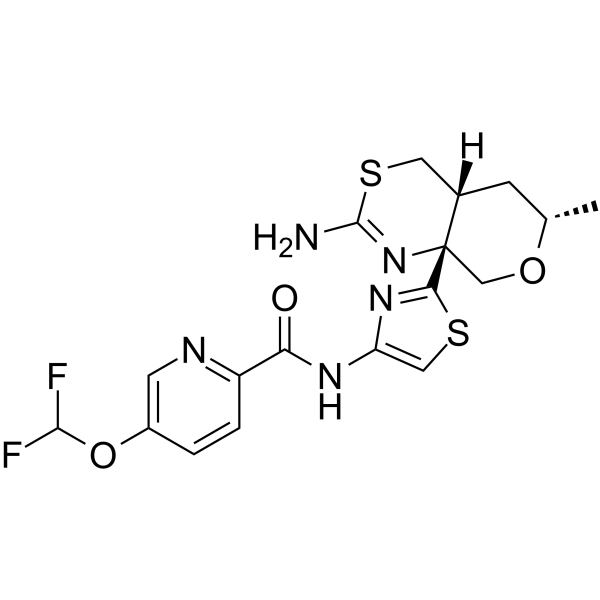
-
- HY-128128
-
|
|
Others
|
Neurological Disease
|
|
ASN04421891 is a potent GPR17 receptor modulator, with an EC50 of 3.67 nM in [35S]GTPγS binding assay. ASN04421891 can be used for neurodegenerative diseases research .
|
-
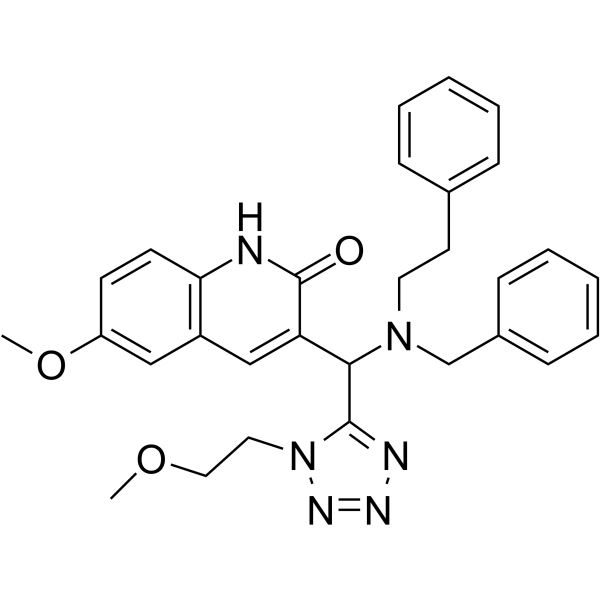
-
- HY-B1486A
-
|
Ba 39089 free base
|
|
|
|
Oxprenolol (Ba 39089 free base) is an orally bioavailable β-adrenergic receptor (β-AR) antagonist with a Ki of 7.10 nM in a radioligand binding assay using rat heart muscle .
|
-
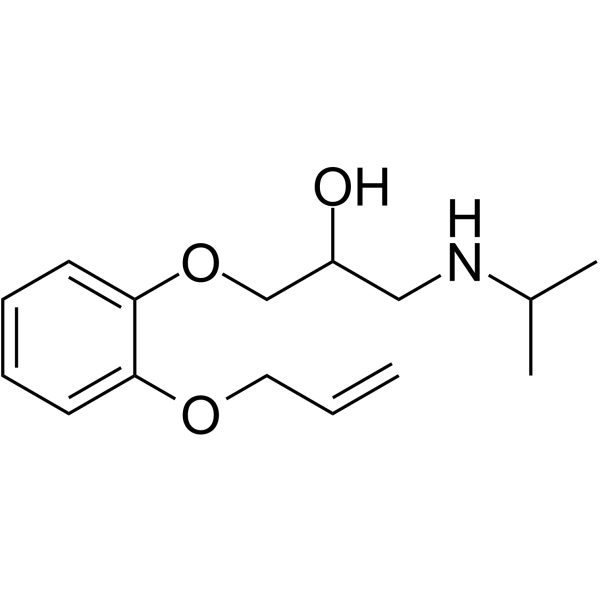
-
- HY-153728
-
|
|
Histone Methyltransferase
|
Cancer
|
|
WM-586 is a covalent WDR5 inhibitor that disrupts the binding of WDR5 to MYC. WM-586 specifically decreases cellular WDR5 and MYC interaction with the IC50 of 101 nM in HTRF assay .
|
-
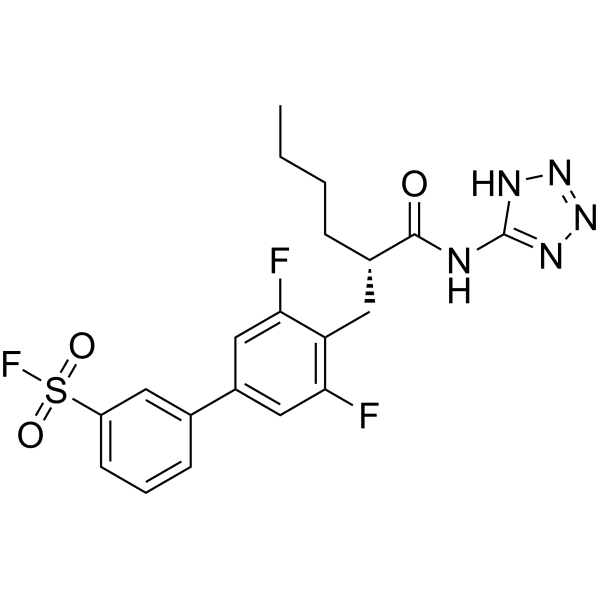
-
- HY-128111
-
|
|
Others
|
Neurological Disease
|
|
ASN02563583, a compound that regulates the activity of the GPR17 receptor, has a IC50 value of 0.64 nM in [35S]GTPγS binding assay. ASN02563583 can be used in the study of neurological diseases .
|
-
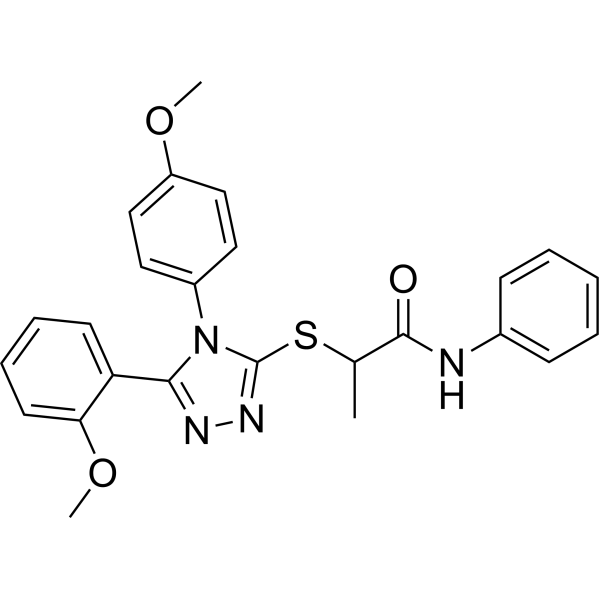
-
- HY-144397
-
|
|
Glucocorticoid Receptor
|
Inflammation/Immunology
|
|
LEO 134310 is a selective, non-steroidal glucocorticoid receptor (GR) agonist optimized for topical research., LEO 134310 showed high affinity (EC50 of 14 nM) in a GR binding assay. LEO 134310 can be used for skin diseases .
|
-
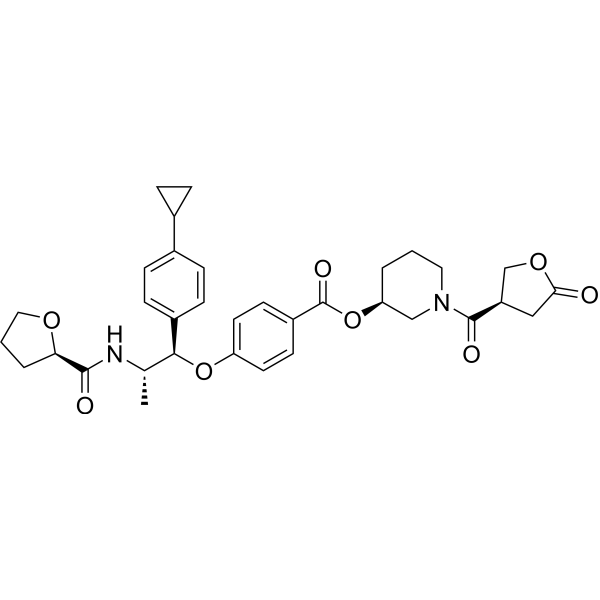
-
- HY-10858
-
|
|
sFRP-1
|
Cancer
|
|
WAY 316606 is an inhibitor of the secreted protein sFRP-1, an endogenous antagonist of the secreted glycoprotein Wnt. The affinity of WAY-316606 for sFRP-1 is determined using the FP binding assay with IC50 of 0.5 μM .
|
-

-
- HY-10858A
-
|
|
sFRP-1
|
Cancer
|
|
WAY 316606 hydrochloride is an inhibitor of the secreted protein sFRP-1, an endogenous antagonist of the secreted glycoprotein Wnt. The affinity of WAY-316606 for sFRP-1 is determined using the FP binding assay with IC50 of 0.5 μM .
|
-
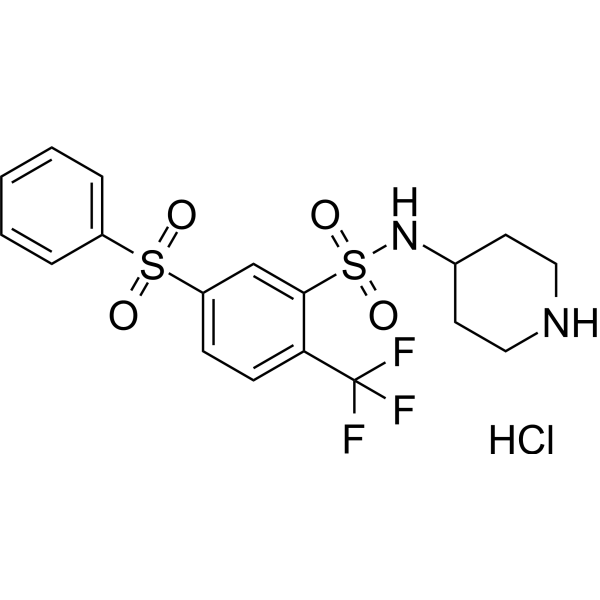
-
- HY-15682
-
TTNPB
3 Publications Verification
Ro 13-7410; Arotinoid acid; AGN191183
|
RAR/RXR
Autophagy
Apoptosis
|
Cancer
|
|
TTNPB is a highly potent RAR agonist. Competitive binding assays using human RARs yield IC50s of α=5.1 nM, β= 4.5 nM, and γ=9.3 nM, respectively.
|
-
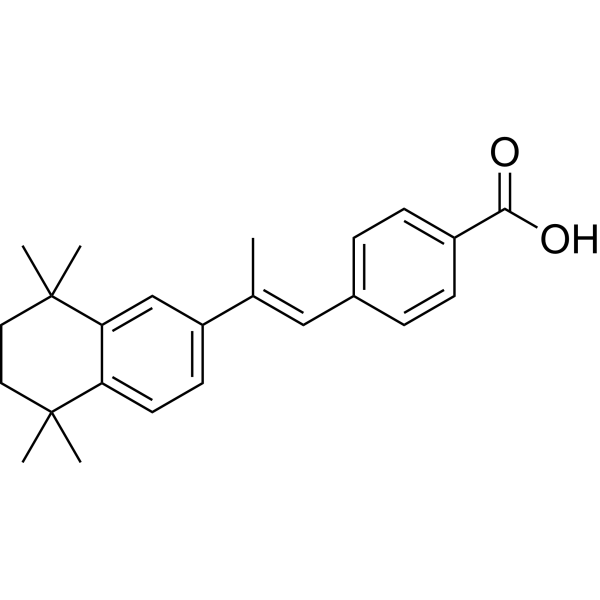
-
- HY-B1486S
-
|
Ba 39089-d7
|
Adrenergic Receptor
|
Cardiovascular Disease
|
|
Oxprenolol-d7 (hydrochloride) is the deuterium labeled Oxprenolol hydrochloride. Oxprenolol hydrochloride (Ba 39089) is an orally bioavailable β-adrenergic receptor (β-AR) antagonist with a Ki of 7.10 nM in a radioligand binding assay using rat heart muscle[1].
|
-
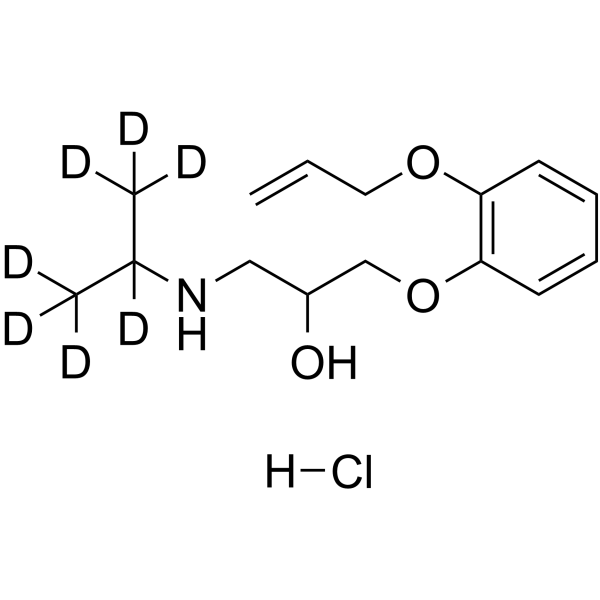
-
- HY-14442
-
-
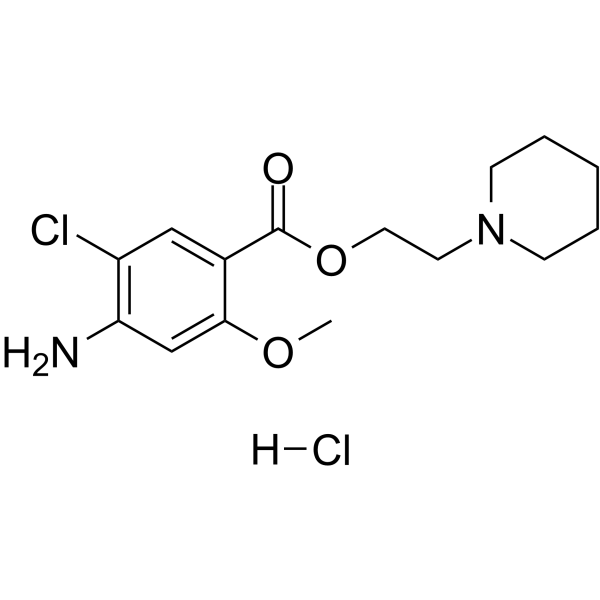
-
- HY-12220
-
MM-102
4 Publications Verification
HMTase Inhibitor IX
|
Histone Methyltransferase
|
Cancer
|
|
MM-102 (HMTase Inhibitor IX) is a potent WDR5/MLL interaction inhibitor, achieves IC50= 2.4 nM with an estimated Ki< 1 nM in WDR5 binding assay, which is >200 times more potent than the ARA peptide.
|
-
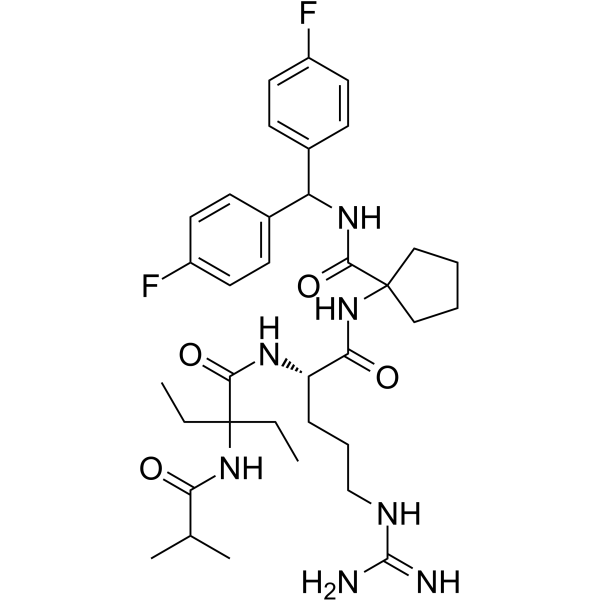
-
- HY-13928
-
-

-
- HY-B1486AS
-
|
|
Isotope-Labeled Compounds
Adrenergic Receptor
|
|
|
Oxprenolol-d7 is the deuterium labeled Oxprenolol. Oxprenolol (Ba 39089 free base) is an orally bioavailable β-adrenergic receptor (β-AR) antagonist with a Ki of 7.10 nM in a radioligand binding assay using rat heart muscle[1].
|
-
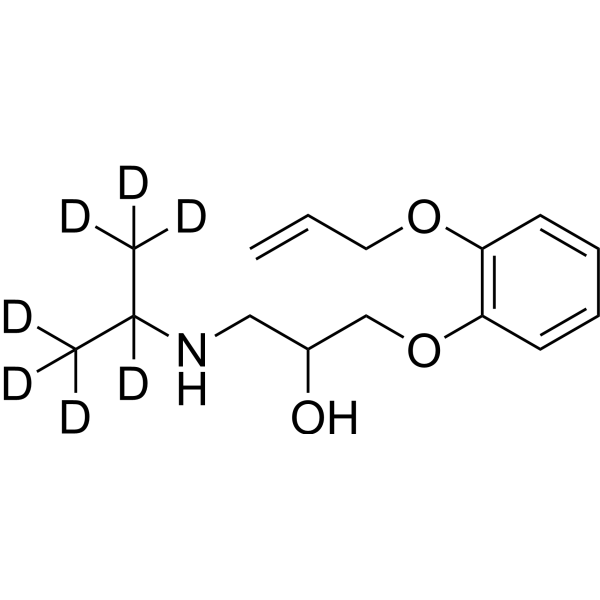
-
- HY-115510
-
|
SPRi3
|
Others
|
Inflammation/Immunology
|
|
SPR inhibitor 3 (SPRi3) is a potent sepiapterin reductase (SPR) inhibitor. SPR inhibitor 3 (SPRi3) displays high binding affinity to human SPR in a cell-free assay (IC50=74 nM) and efficiently reduces biopterin levels in a cell-based assay (IC50=5.2 μM). SPR inhibitor 3 (SPRi3) reduces neuropathic and inflammatory pain through a reduction of BH4 levels .
|
-
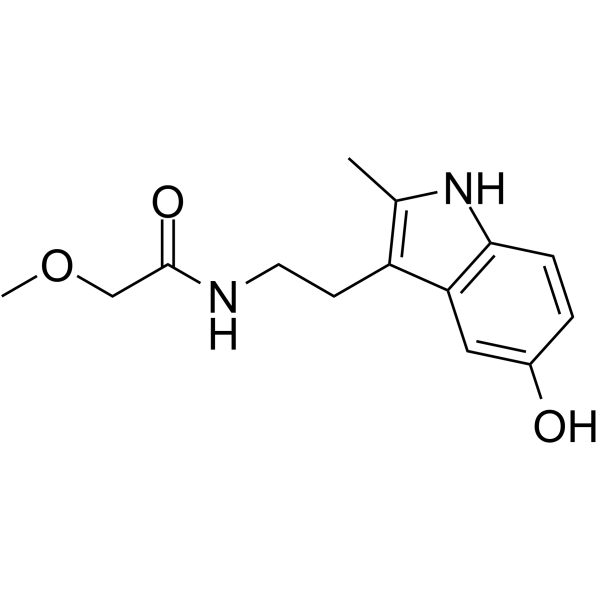
-
- HY-12220A
-
|
HMTase Inhibitor IX TFA
|
Histone Methyltransferase
|
Cancer
|
|
MM-102 TFA (HMTase Inhibitor IX TFA) is a potent WDR5/MLL interaction inhibitor, achieves IC50 = 2.4 nM with an estimated Ki < 1 nM in WDR5 binding assay, which is >200 times more potent than the ARA peptide.
|
-
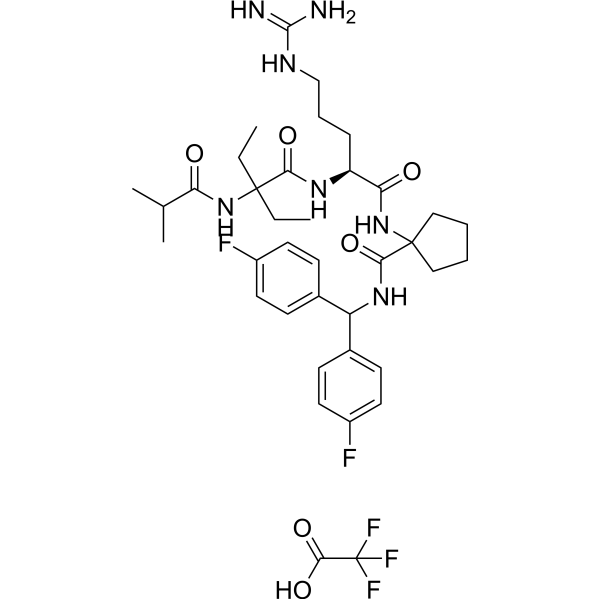
-
- HY-14460
-
|
|
FLAP
|
Inflammation/Immunology
|
|
AM679 is a potent, selective 5-lipoxygenase-activating protein (FLAP) inhibitor with an IC50 of 2 nM in a human FLAP membrane binding assay. AM679 markedly reduces the respiratory syncytial virus-driven ocular pathology as well as the synthesis of cysteinyl leukotrienes (CysLTs) in the eye .
|
-
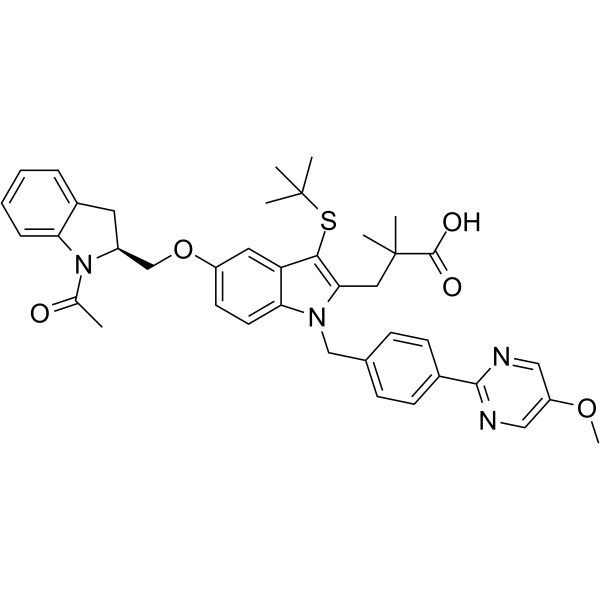
-
- HY-103663
-
MAK683
1 Publications Verification
|
Histone Methyltransferase
|
Cancer
|
|
MAK683 is an embryonic ectoderm development (EED) inhibitor extracted from patent US20160176882 A1, compound example 2. MAK683 exhibits IC50s of 59, 89, 26 nM in EED Alphascreen binding, LC-MS and ELISA assay .
|
-

-
- HY-14250A
-
|
|
Androgen Receptor
|
Endocrinology
|
|
(Rac)-PF-998425 is a potent, selective, nonsteroidal androgen receptor (AR) antagonist. (Rac)-PF-998425 has IC50 values of 26 and 90 nM in the AR binding and cellular assays, respectively. (Rac)-PF-998425 has the potential for the research of the androgenetic alopecia .
|
-

-
- HY-103663A
-
|
|
Histone Methyltransferase
|
Cancer
|
|
MAK683 hydrochloride is an embryonic ectoderm development (EED) inhibitor extracted from patent US20160176882 A1, compound example 2. MAK683 exhibits IC50s of 59, 89, 26 nM in EED Alphascreen binding, LC-MS and ELISA assay .
|
-

-
- HY-P1096
-
|
|
Cholecystokinin Receptor
|
Metabolic Disease
|
|
A71623, a CCK-4-based peptide, is a potent and highly selective CCK-A full agonist. The IC50s for A-71623 are 3.7 nM in guinea pig pancreas (CCK-A) and 4500 nM in cerebral cortex (CCK-B) in radioligand binding assays, respectively .
|
-

-
- HY-145817A
-
|
(S)-RP-6306
|
Wee1
|
Cancer
|
|
RP-6306 ((S)-RP-6306) is a potent, selective and orally active PKMYT1 inhibitor with an IC50 of 14 nM. RP-6306 shows a high degree of selectivity over other kinases in cellular binding assays. RP-6306 shows anticancer effects .
|
-

-
- HY-144784
-
|
|
CXCR
|
Inflammation/Immunology
Cancer
|
|
CXCR2 antagonist 7 (compound 19) is a potent CXCR2 antagonist. CXCR2 antagonist 7 shows potent CXCR2 binding affinity (IC50=0.044 µM) and calcium mobilization (IC50=0.66 µM) [ 1].
|
-
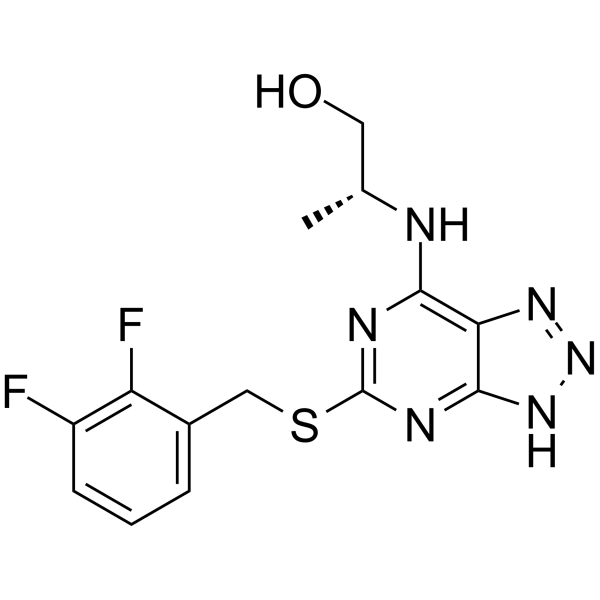
-
- HY-144783
-
|
|
CXCR
|
Inflammation/Immunology
Cancer
|
|
CXCR2 antagonist 6 (compound 35c) is a potent CXCR2 antagonist. CXCR2 antagonist 6 shows potent CXCR2 binding affinity (IC50=0.044 µM) and calcium mobilization (IC50=0.66 µM) [ 1].
|
-
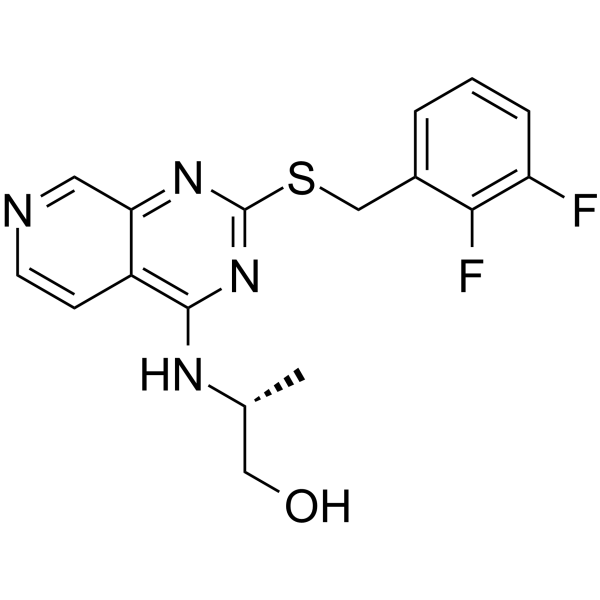
-
- HY-144781
-
|
|
CXCR
|
Inflammation/Immunology
Cancer
|
|
CXCR2 antagonist 5 (compound 25) is a potent CXCR2 antagonist. CXCR2 antagonist 5 shows potent CXCR2 binding affinity (IC50=0.013 µM) and calcium mobilization (IC50=0.1 µM) [ 1].
|
-
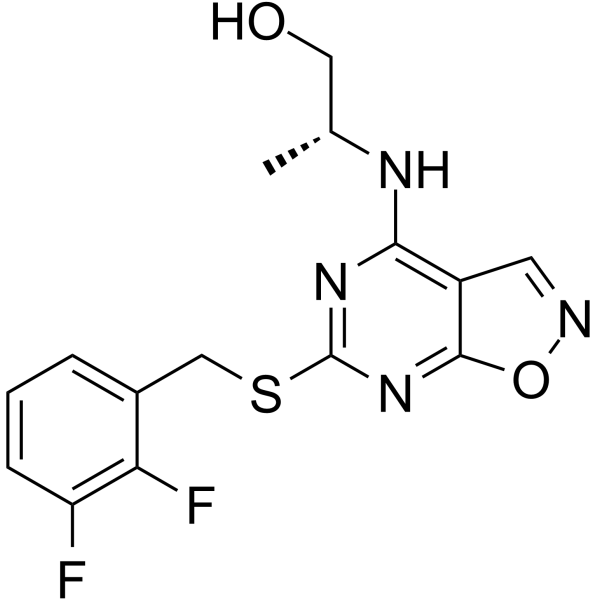
-
- HY-107587
-
|
|
Integrin
|
Inflammation/Immunology
|
|
A-286982 is a potent and allosteric LFA-1/ICAM-1 interaction inhibitor with IC50s of 44 nM and 35 nM in an LFA-1/ICAM-1 binding and LFA-1-mediated cellular adhesion assay, respectively .
|
-

-
- HY-108507
-
|
|
Smo
|
Cancer
|
|
MRT-10 is a seven-transmembrane receptor smoothened (Smo) antagonist with an IC50 of 0.65 μM in the micromolar range in various Hedgehog (Hh) assays. MRT-10 binds to the Smo receptor at the level of the Bodipycyclopamine binding site. MRT-10 can be used for the research of cancer .
|
-
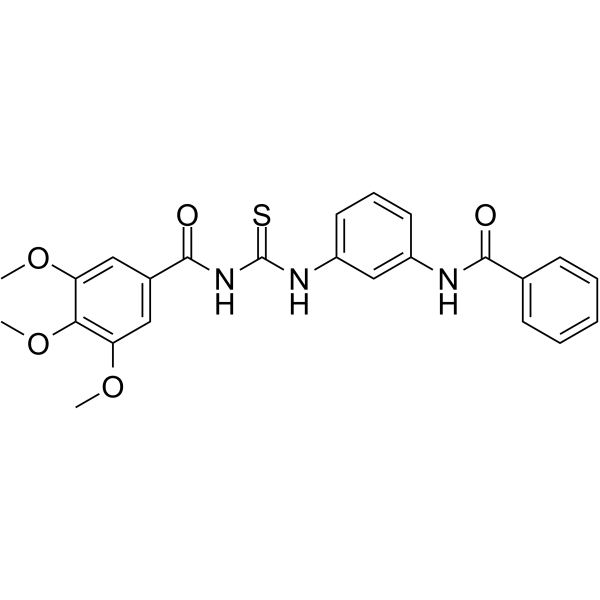
-
- HY-126077
-
|
LXI-15029
|
mTOR
|
Inflammation/Immunology
Cancer
|
|
MTI-31 (LXI-15029) is a potent, orally active and highly selective inhibitor of mTORC1 and mTORC2. MTI-31 is selective for mTOR (Kd: 0.20 nM) versus PIK3CA, PIK3CB and PIK3G with >5,000 fold selectivity in mTOR binding assays. MTI-31 shows an IC50 of 39 nM for mTOR in LANCE assay of mTOR substrate phosphorylation with 100 μM ATP. MTI-31 can be used for the research of breast cancer .
|
-
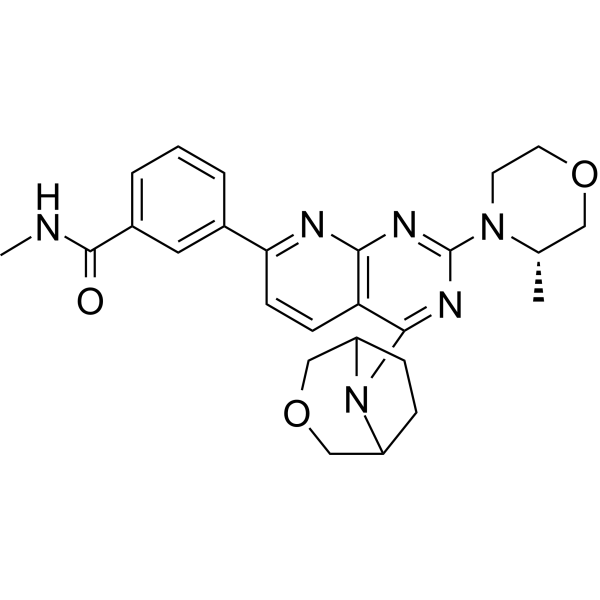
-
- HY-149005
-
|
|
Histone Methyltransferase
|
Cancer
|
|
PRMT5-IN-19 (Compound 41) is an selective orally active non-nucleoside PRMT5 inhibitor with IC50 values of 23.9 nM (radioactive biochemical assay) and 47 nM (AlphaLISA assay). PRMT5-IN-19 can occupy the SAM-binding pocket in PRMT5 and block methyltransferase activity, which displays good selectivity over other PRMTs and PKMTs. PRMT5-IN-19 inhibits cell proliferation by inducing cell apoptosis, and can be used for cancer-related research .
|
-
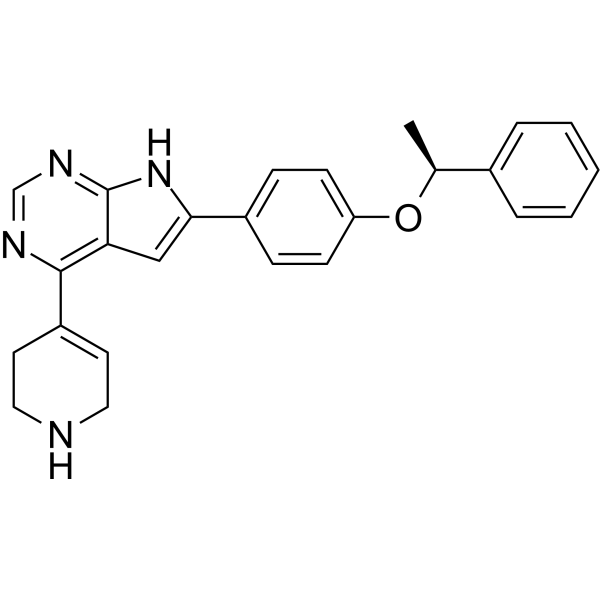
-
- HY-151884
-
|
|
c-Myc
|
Cancer
|
|
FUBP1-IN-2 (compound 9) is a potent FUBP1 (far upstream binding protein 1) inhibitor. FUBP1-IN-2 inhibits the KH4 FUBP1-FUSE interaction in a gel shift assay. FUBP1-IN-2 binds to FUBP1 in a ChIP assay. FUBP1-IN-2 reduces both c-Myc mRNA and protein expression, increases p21 mRNA and protein expression, and depletes intracellular polyamines .
|
-
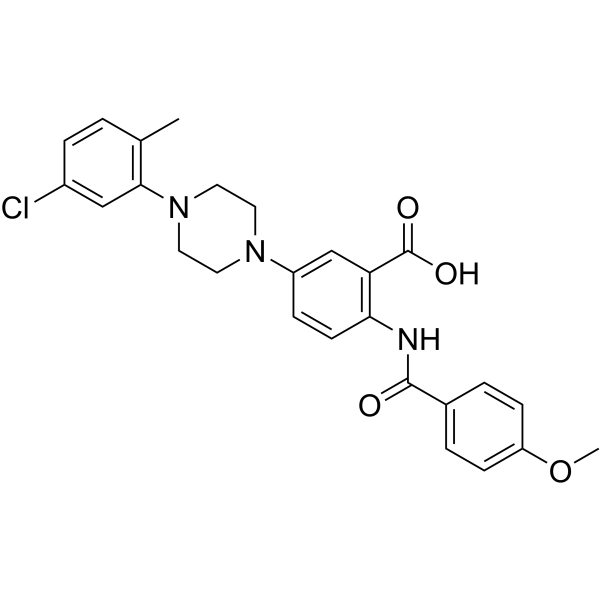
-
- HY-160292
-
-

-
- HY-127111
-
|
|
ATP Citrate Lyase
|
Cancer
|
|
NDI-091143 is a potent and high-affinity human ATP-citrate lyase (ACLY) inhibitor with an IC50 of 2.1 nM (ADP-Glo assay), a Ki of 7.0 nM and a Kd of 2.2 nM. NDI-091143 inhibits ACLY catalysis allosterically, by stabilizing large conformational changes in the citrate domain that indirectly block the binding and recognition of citrate .
|
-
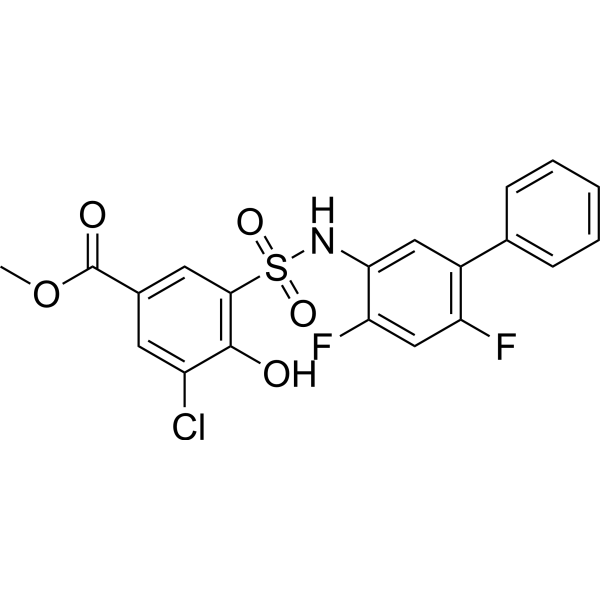
-
- HY-120635
-
|
|
PD-1/PD-L1
|
Inflammation/Immunology
Cancer
|
|
BMS-1001 is an orally active human PD-L1/PD-1 immune checkpoint inhibitor. BMS-1001 exhibits low-toxicity in cells. The IC50 value of BMS-1001 in a homogeneous time-resolved fluorescence (HTRF) binding assay is 2.25 nM .
|
-
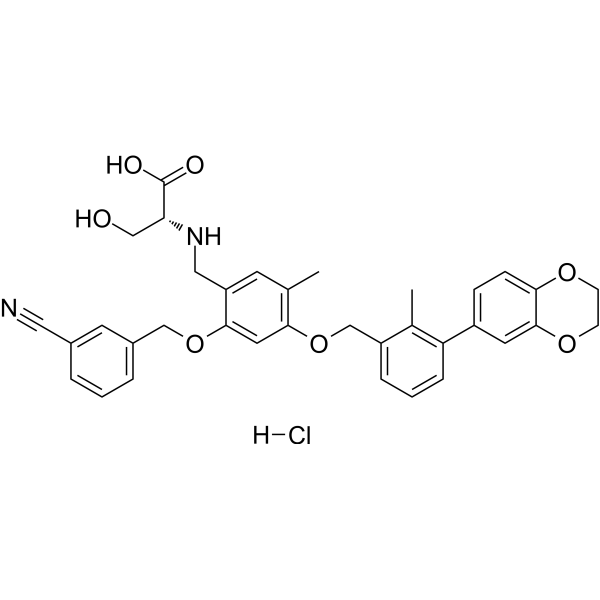
-
- HY-14250
-
|
|
Androgen Receptor
|
Endocrinology
|
|
PF-998425 is a potent, selective nonsteroidal androgen receptor (AR) antagonist with an IC50 of 37 nM and 43 nM in AR binding and cellular assays, respectively. PF-998425 has low activity on common receptors and enzymes, such as progesterone receptor. PF-998425 can be used for sebum control and androgenetic alopecia research .
|
-
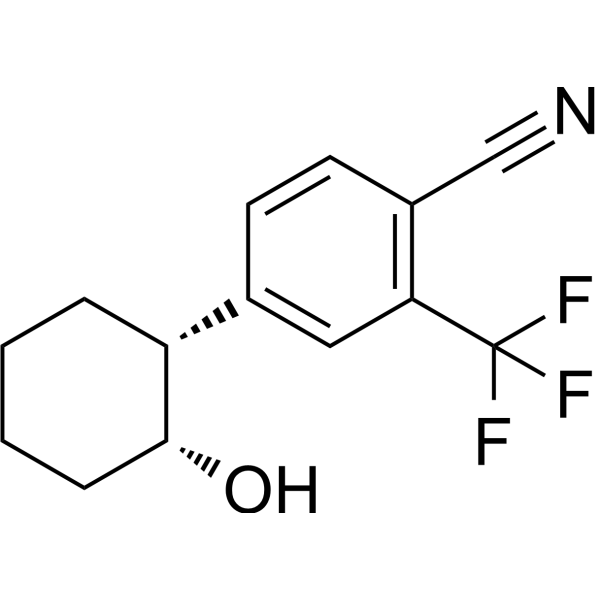
-
- HY-10835
-
DG-041
2 Publications Verification
|
Prostaglandin Receptor
|
Cardiovascular Disease
|
|
DG-041 is a potent, high affinity and selective EP3 receptor antagonist with IC50s of 4.6 nM and 8.1 nM in the binding and FLIPR assay, respectively. DG-041 inhibits PGE2 facilitation of platelet aggregation. DG-041 crosses the blood-brain barrier .
|
-
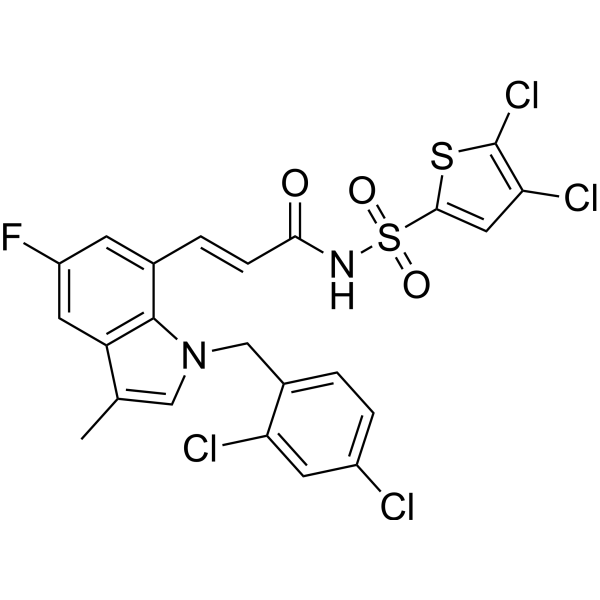
-
- HY-120647
-
|
|
PD-1/PD-L1
|
Inflammation/Immunology
Cancer
|
|
BMS-1001 is an orally active human PD-L1/PD-1 immune checkpoint inhibitor. BMS-1001 exhibits low-toxicity in cells. The IC50 value of BMS-1001 in a homogeneous time-resolved fluorescence (HTRF) binding assay is 2.25 nM .
|
-
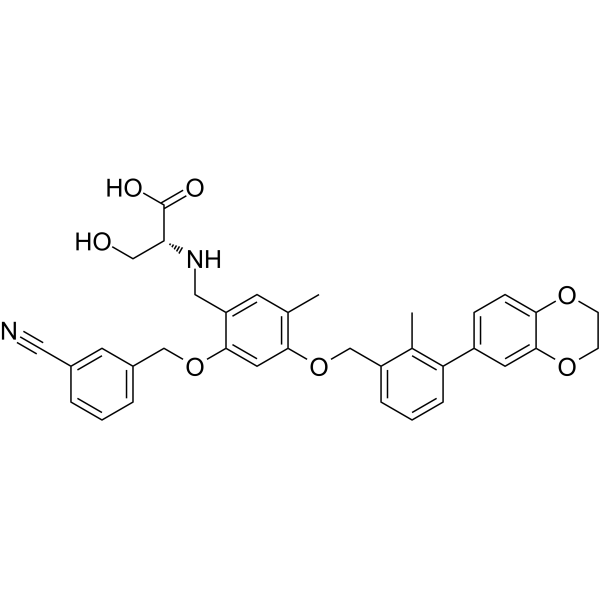
-
- HY-151968
-
|
|
Ras
|
Cancer
|
|
KRAS G12C inhibitor 57 (Compound 50) is a potent, selective, covalent and orally active KRAS G12C inhibitor with an IC50 of 0.21 μM in KRAS G12C/SOS1 binding assay. KRAS G12C inhibitor 57 induces cancer cell apoptosis .
|
-
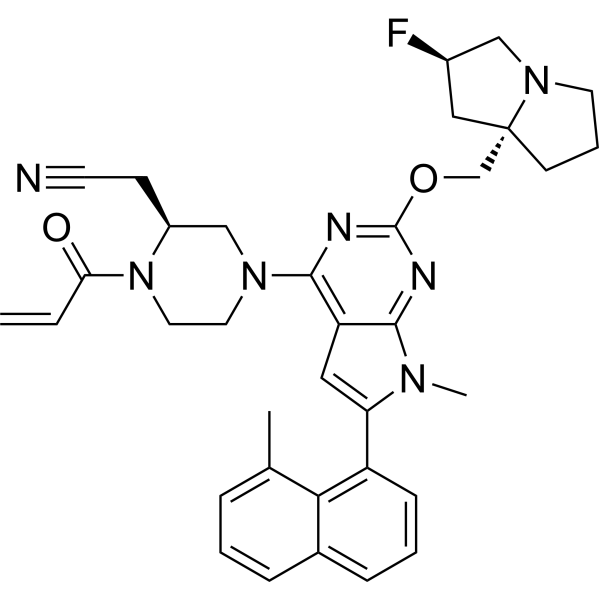
-
- HY-11051
-
|
|
Opioid Receptor
|
Inflammation/Immunology
|
|
JNJ-20788560 is a selective and orally active delta opioid receptor agonist with an affinity of 2.0 nM for DOR (rat brain cortex binding assay). JNJ-20788560 also is a potent and efficacious antihyperalgesic agent that does not produce respiratory depression, pharmacologic tolerance, or physical dependence. JNJ-20788560 can be used for the research of the relief of inflammatory hyperalgesia .
|
-
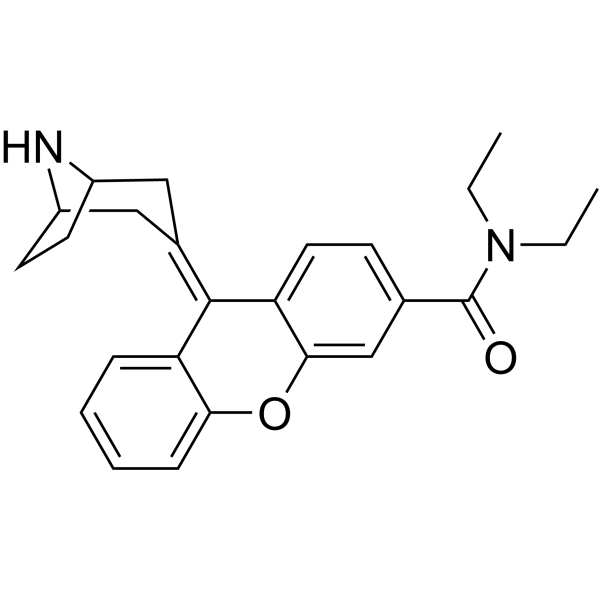
-
- HY-P1376A
-
|
|
mAChR
Adrenergic Receptor
|
Endocrinology
|
|
G-Protein antagonist peptide TFA is a truncated substance P-related peptide, competes with receptor for G protein binding. G-Protein antagonist peptide TFA inhibits the activation of Gi or Go by M2 muscarinic cholinergic receptor (M2 mAChR) or of Gs by beta-adrenergic receptor in the reconstituted phospholipid vesicles, assayed by receptor-promoted GTP hydrolysis .
|
-
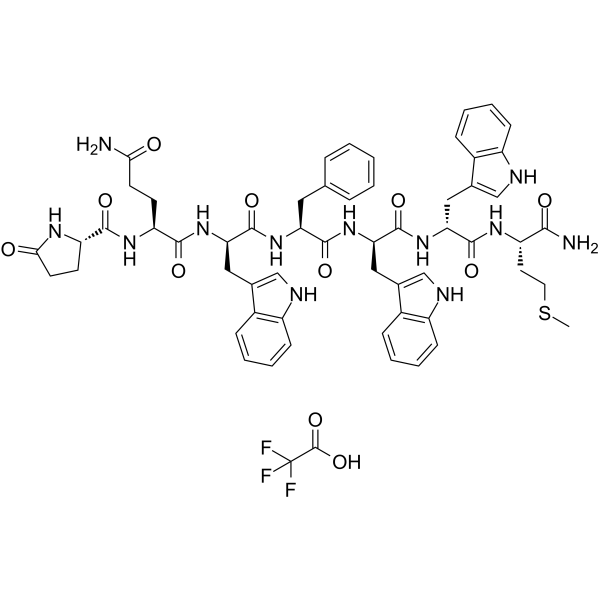
-
- HY-134471
-
|
|
TNF Receptor
|
Inflammation/Immunology
|
|
TNF-α-IN-2 is a potent and orally active inhibitor of tumor necrosis factor alpha (TNFα), with an IC50 of 25 nM in the HTRF assay. TNF-α-IN-2 distorts the TNFα trimer upon binding, leading to aberrant signaling when the trimer binds to TNFR1. TNF-α-IN-2 can be used for the research of rheumatoid arthritis .
|
-
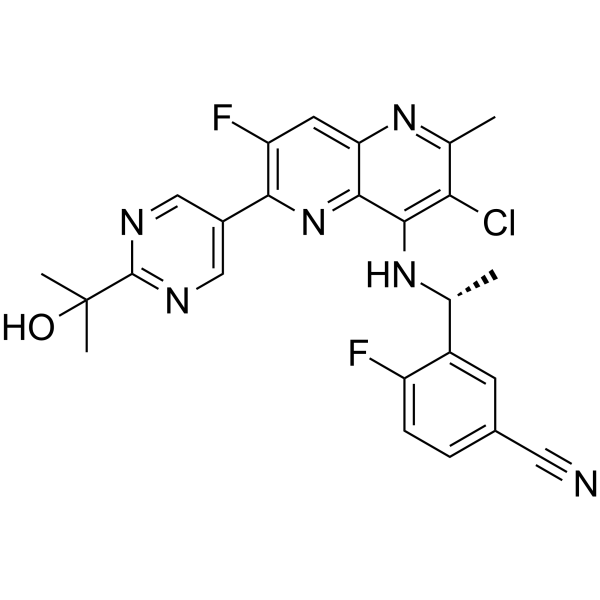
- HY-10569
-
|
ACT-128800
|
LPL Receptor
|
Inflammation/Immunology
|
|
Ponesimod (ACT-128800) is a potent, selective and orally active agonist of S1P1, with an IC50 of 6 nM in a radioligand binding assay. Ponesimod activates S1P1-mediated signal transduction with high potency (EC50=5.7 nM). Ponesimod can protect against lymphocyte-mediated tissue inflammation .
|
-
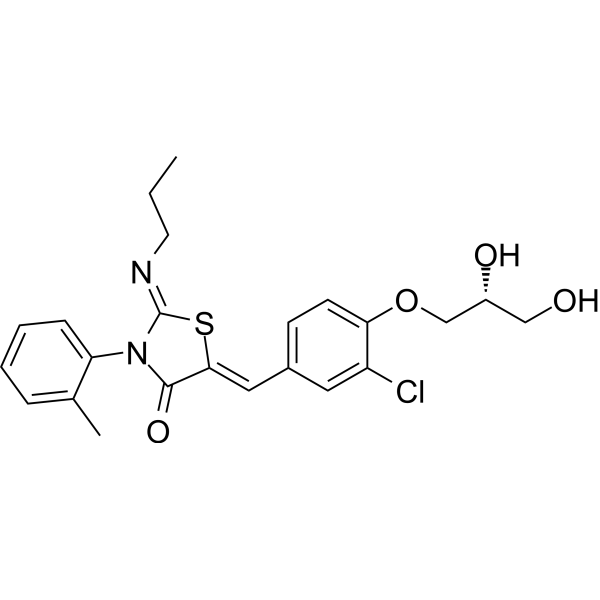
- HY-100383
-
|
BHI1; BH 3I1
|
Bcl-2 Family
MDM-2/p53
E1/E2/E3 Enzyme
|
Cancer
|
|
BH3I-1 is a Bcl-2 family antagonist, which inhibits the binding of the Bak BH3 peptide to Bcl-xL with a Ki of 2.4±0.2 μM in FP assay. BH3I-1 has a Kd of 5.3 μM against the p53/MDM2 pair.
|
-
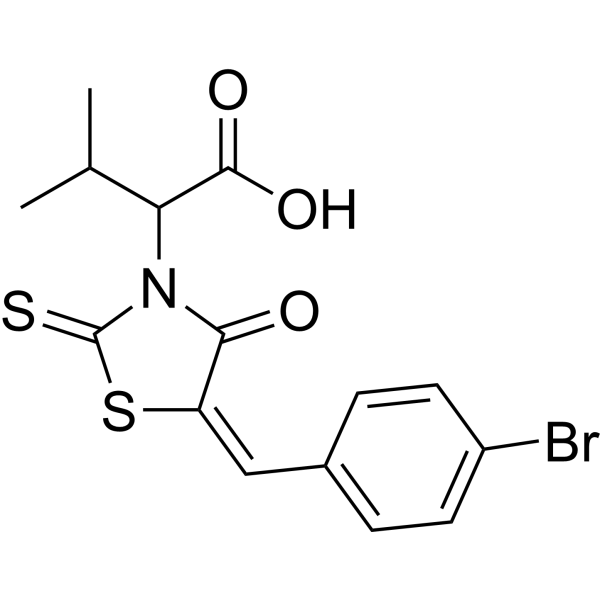
- HY-122611
-
|
|
Androgen Receptor
Apoptosis
|
Cancer
|
|
CSRM617 is a selective small-molecule inhibitor of the transcription factor ONECUT2 (OC2, a master regulator of androgen receptor) with a Kd of 7.43 uM in SPR assays, binding to OC2-HOX domain directly. CSRM617 induces apoptosis by appearance of cleaved Caspase-3 and PARP. CSRM617 is well tolerated in the prostate cancer mouse model
|
-
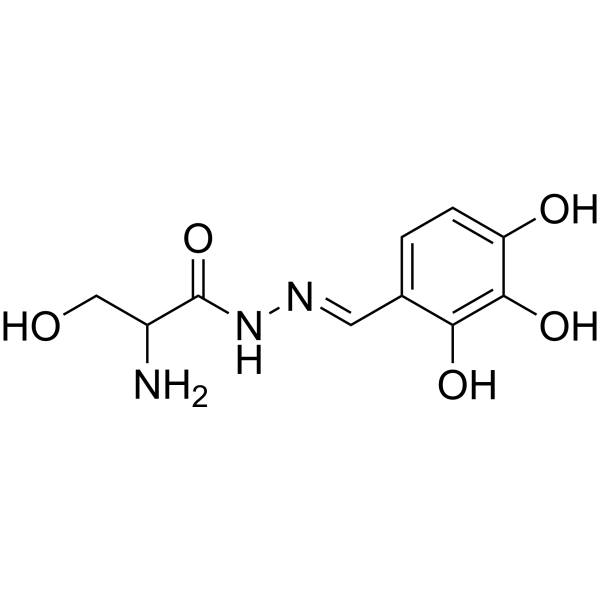
- HY-P9949
-
|
Sch 55700
|
Interleukin Related
|
Inflammation/Immunology
|
|
Reslizumab (Sch 55700) is humanized monoclonal antibodies that target interleukin-5 (IL-5) for the treatment of eosinophilic asthma. Reslizumab is effective in neutralizing the function of IL-5. Reslizumab has high binding affinity for human IL-5, with KD values of 109 pM and 4.3 pM in the the Biacore surface plasmon resonance and Kinetic Exclusion Assay, respectively .
|
-

- HY-122611A
-
|
|
Androgen Receptor
Apoptosis
|
Cancer
|
|
CSRM617 hydrochloride is a selective small-molecule inhibitor of the transcription factor ONECUT2 (OC2, a master regulator of androgen receptor) with a Kd of 7.43 uM in SPR assays, binding to OC2-HOX domain directly. CSRM617 hydrochloride induces apoptosis by appearance of cleaved Caspase-3 and PARP. CSRM617 hydrochloride is well tolerated in the prostate cancer mouse model
|
-
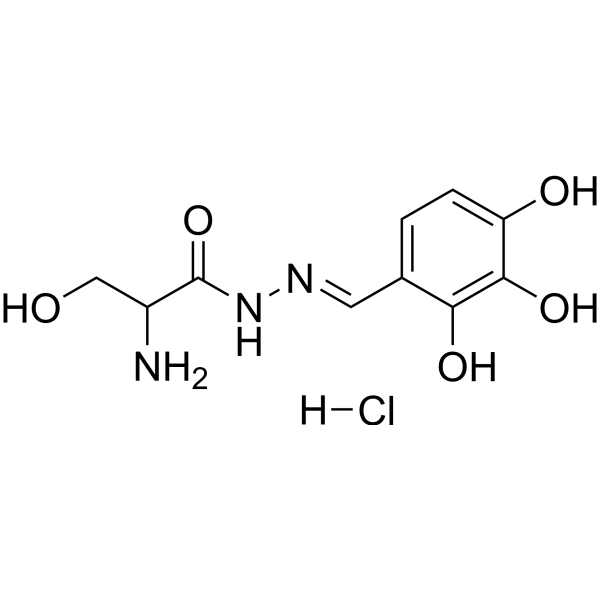
- HY-10037
-
|
MK-591
|
FLAP
Apoptosis
|
Inflammation/Immunology
|
|
Quiflapon (MK-591) is a selective and specific 5-lipoxygenase-activating protein (FLAP) inhibitor with an IC50 of 1.6 nM in a FLAP binding assay. Quiflapon is also a potent and orally active Leukotriene biosynthesis (LT) inhibitor, shows IC50 values of 3.1 and 6.1 nM in intact human and elicited rat PMNLs, respectively. Quiflapon induces cell apoptosis .
|
-
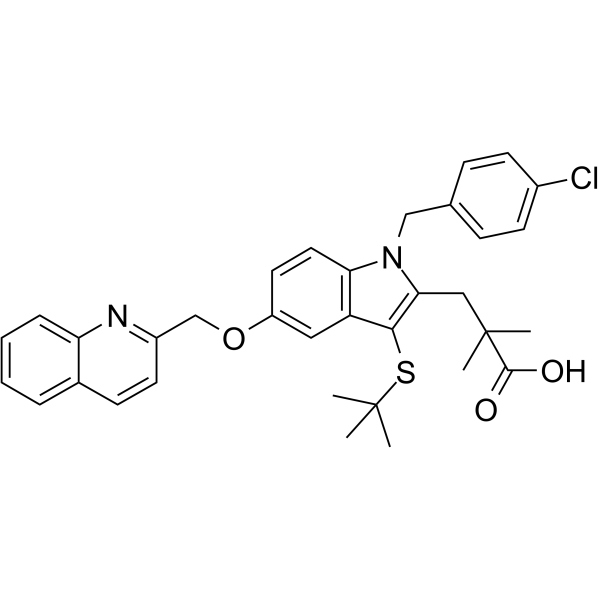
- HY-122630
-
|
|
LIM Kinase (LIMK)
|
Cancer
|
|
TH-257 is a potent inhibitor of LIMK1 and LIMK2 with IC50 values of 84 nM and 39 nM for LIMK1 and LIMK2, respectively, and it can be used as a chemical probe for LIMK1 and LIMK2. TH-257 is an allosteric inhibitor targeting a binding pocket induced by an αC and DFG-out conformation. TH257 is exquisitely selective and no significant activity against the wider kinome has been observed in the KINOMEscan assay at 1 μM .
|
-

- HY-119366
-
|
|
ROR
|
Inflammation/Immunology
|
|
S18-000003 is a potent, selective and orally active inhibitor of retinoic acid receptor-related orphan receptor-gamma-t (RORγt), with an IC50 of <30 nM towards human RORγt in competitive binding assays. S18-000003 shows selectivity for RORγt over other ROR family members (IC50>10 μM). S18-000003 can be used for the research of psoriasis with low risk of thymic aberrations .
|
-
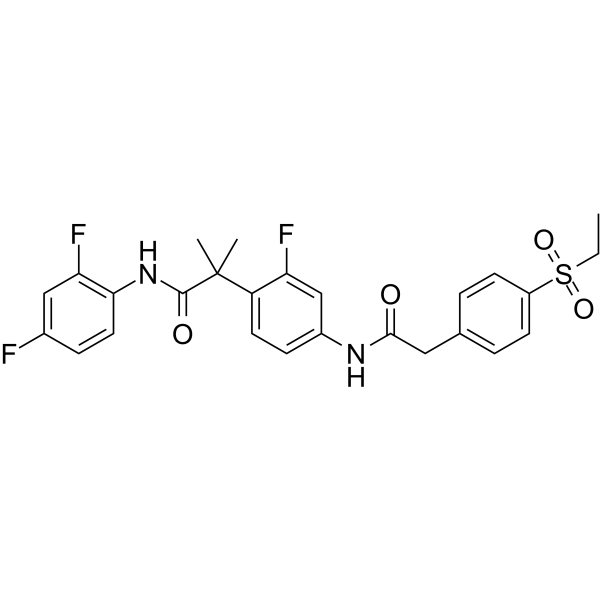
- HY-103151
-
|
|
5-HT Receptor
|
Neurological Disease
|
|
CP94253 hydrochloride is a potent and selective agonist of 5-HT1B receptor (Ki= 2 nM in a radioligand binding assay).Ki values for 5-HT1A, 5-HT1D, 5-HT1C and 5-HT2 receptors are 89, 49, 860, and 1600 nM respectively . CP94253 hydrochloride is centrally active upon systemic administration in vivo .
|
-

- HY-D0014
-
|
|
Biochemical Assay Reagents
|
Others
|
|
Brilliant Blue G-250 is a dye commonly used for the visualization of proteins separated by SDS-PAGE, offering a simple staining procedure and high quantitation. In the Bradford protein assay, protein concentrations are determined by the absorbance at 595 nm due to the binding of Brilliant Blue G-250 to proteins. Brilliant Blue G-250 is a safe highly selective P2×7R antagonist with promising consequent inactivation of NLRP3 inflammasome .
|
-
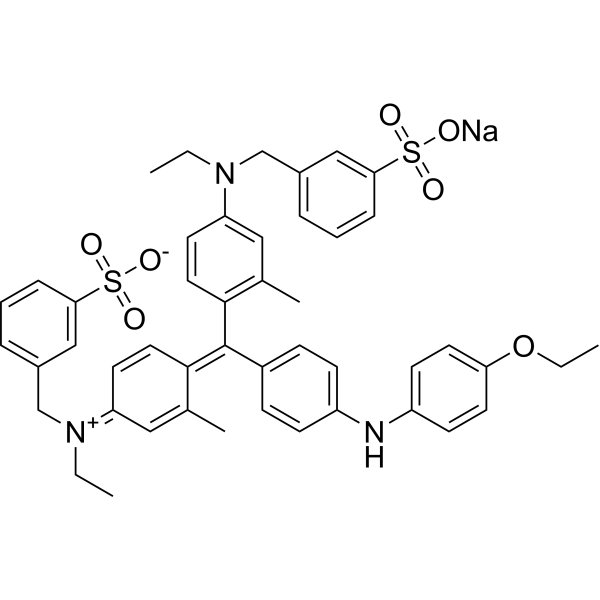
- HY-W436424
-
|
|
DNA/RNA Synthesis
|
Infection
|
|
DMA-IN-1 is a DNA adenine methyltransferase (DAM) inhibitor, IC50: 48 μM. DMA-IN-1 inhibits Caulobacter growth with an MIC of 35 μM .
|
-
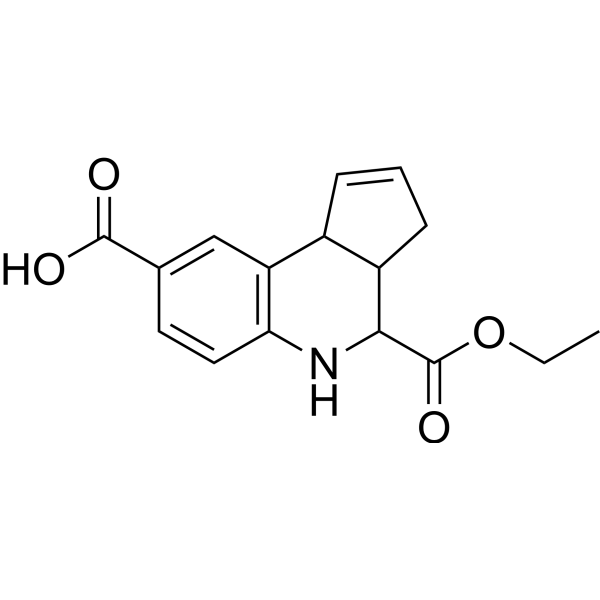
- HY-10569S
-
|
ACT-128800-d4
|
Isotope-Labeled Compounds
LPL Receptor
|
Others
|
|
Ponesimod-d4 (ACT-128800-d4)is the deuterium labeledPonesimod(HY-10569) . Ponesimod (ACT-128800) is a potent, selective and orally active agonist of S1P1, with an IC50 of 6 nM in a radioligand binding assay. Ponesimod activates S1P1-mediated signal transduction with high potency (EC50=5.7 nM). Ponesimod can protect against lymphocyte-mediated tissue inflammation .
|
-

- HY-135985
-
|
|
Others
|
Cancer
|
|
DCLK1-IN-1 is a selective, oral bioavailability in vivo-compatible chemical probe of the doublecortin like kinase 1 (DCLK1 kinase) domain. DCLK1-IN-1 inhibits DCLK1 and DCLK2 kinases (IC50: DCLK1=9.5/57.2 nM and DCLK2=31/103 nM in binding and kinase assay, respectively). DCLK1-IN-1 shows low toxicity, and can investigate DCLK1 biology and establish its role in cancer, like DCLK1 + pancreatic ductal adenocarcinoma (PDAC) .
|
-
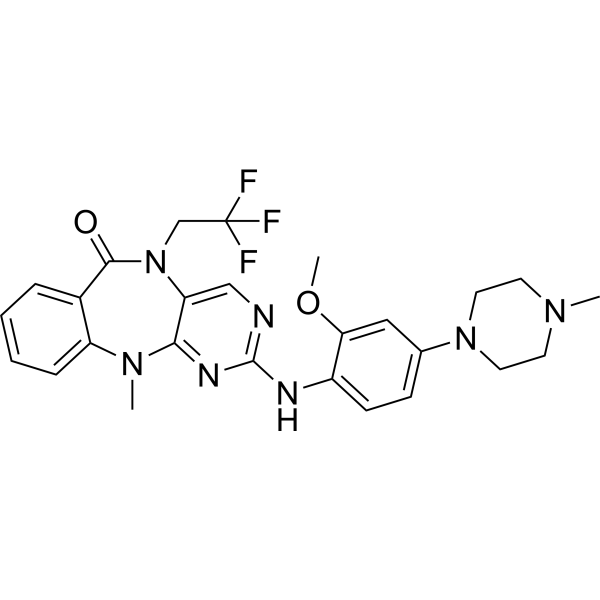
- HY-10569S1
-
|
ACT-128800-d7
|
Isotope-Labeled Compounds
|
Others
|
|
Ponesimod-d7 (ACT-128800-d7) is the deuterium-labeled Ponesimod (HY-10569). Ponesimod-d7 (ACT-128800) is a potent, selective and orally active agonist of S1P1, with an IC50 of 6 nM in a radioligand binding assay. Ponesimod-d7 activates S1P1-mediated signal transduction with high potency (EC50=5.7 nM). Ponesimod-d7 can protect against lymphocyte-mediated tissue inflammation .
|
-

- HY-135303
-
|
|
GPR84
|
Inflammation/Immunology
|
|
GLPG1205 is potent, selective and orally active GPR84 (a G-protein-coupled receptor) antagonist with a favorable PK/PD profile. GLPG1205 has anti-inflammatory activity and is used for the treatment of pulmonary fibrosis . GLPG1205 is a click chemistry reagent, it contains an Alkyne group and can undergo copper-catalyzed azide-alkyne cycloaddition (CuAAc) with molecules containing Azide groups.
|
-
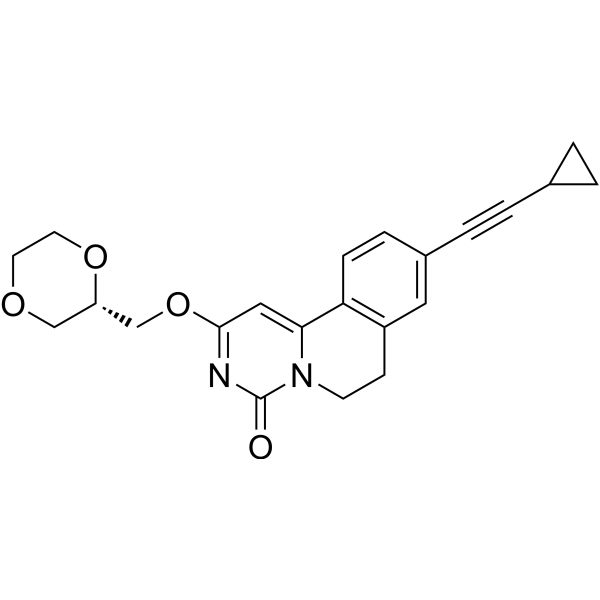
- HY-124346
-
|
|
Others
|
Metabolic Disease
|
|
T-3364366 is a reversible, slow-binding, thienopyrimidinone delta-5 desaturase (D5D) inhibitor with IC50s of 1.9 nM and 2.1 nM in HepG2 and RLN-10 cells, respectively. T-3364366 exhibits potent D5D (IC500=19 nM) inhibitory activity and excellent selectivity away from delta-6 desaturase (D6D, IC50=6200 nM) and delta-9 desaturase (stearoyl-CoA desaturase, SCD,50 >10000 nM) in the enzymatic activity assay .
|
-
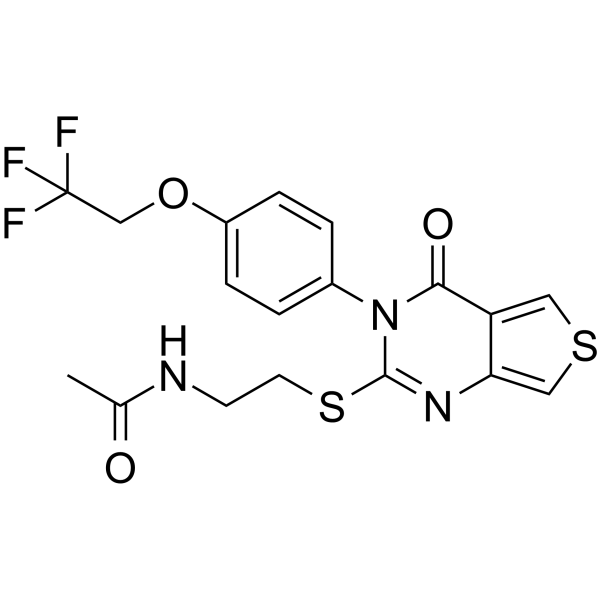
- HY-103247
-
|
|
Angiotensin Receptor
|
Cardiovascular Disease
|
|
EMD 66684 is an antagonist of Angiotensin II Type 1 (AT1) receptor. EMD 66684 shows potent binding affinities for the AT1 subtype Ang II receptor with an IC50 value of 0.7 nM. EMD 66684 also serves as an antiischemic cytoprotectant - .
|
-

- HY-10898
-
-
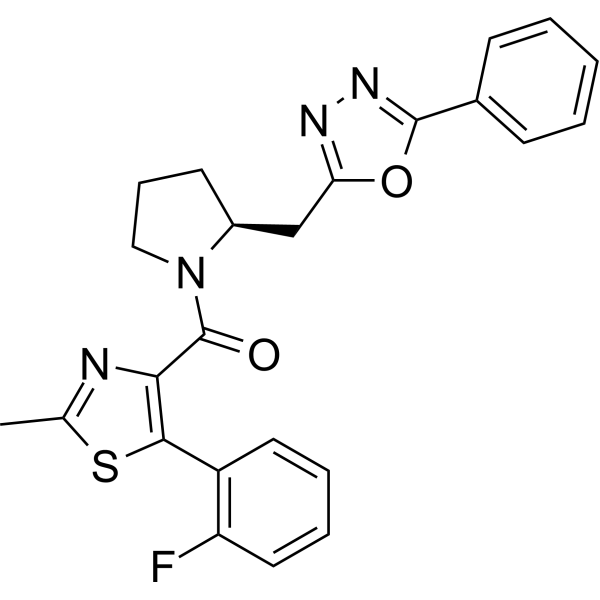
-
-
HY-L0115V
-
|
|
10,091 compounds
|
|
ASINEX has elaborated a library of diverse macrocycles using an effective tool box of synthetic methods. The resulting scaffolds are novel, tremendously diverse, medchem-relevant, macrocyclic frameworks.
Macrocyles tend to be larger than traditional screening molecules which make them perfect discovery tools for targets with shallow or extended binding sites. At the same time, their unique character based on restricted flexibility and ability to form intra-molecular hydrogen bonds allows for design approaches effectively optimizing properties such asaqueous solubility and membrane permeability. Many of these macrocycles have been tested for aqueous and DMSO solubility with cut-offs applied at 10 mM in DMSO and 50 µM in PBS (pH 7.4) followed by PAMPA permeability assay.
|
| Cat. No. |
Product Name |
Type |
-
- HY-D0014
-
|
|
Biochemical Assay Reagents
|
|
Brilliant Blue G-250 is a dye commonly used for the visualization of proteins separated by SDS-PAGE, offering a simple staining procedure and high quantitation. In the Bradford protein assay, protein concentrations are determined by the absorbance at 595 nm due to the binding of Brilliant Blue G-250 to proteins. Brilliant Blue G-250 is a safe highly selective P2×7R antagonist with promising consequent inactivation of NLRP3 inflammasome .
|
| Cat. No. |
Product Name |
Target |
Research Area |
-
- HY-P1096
-
|
|
Cholecystokinin Receptor
|
Metabolic Disease
|
|
A71623, a CCK-4-based peptide, is a potent and highly selective CCK-A full agonist. The IC50s for A-71623 are 3.7 nM in guinea pig pancreas (CCK-A) and 4500 nM in cerebral cortex (CCK-B) in radioligand binding assays, respectively .
|
-
- HY-P1376A
-
|
|
mAChR
Adrenergic Receptor
|
Endocrinology
|
|
G-Protein antagonist peptide TFA is a truncated substance P-related peptide, competes with receptor for G protein binding. G-Protein antagonist peptide TFA inhibits the activation of Gi or Go by M2 muscarinic cholinergic receptor (M2 mAChR) or of Gs by beta-adrenergic receptor in the reconstituted phospholipid vesicles, assayed by receptor-promoted GTP hydrolysis .
|
-
- HY-P5367
-
|
PMDM6-F
|
Peptides
|
Others
|
|
5-FAM-PMDM6 (PMDM6-F) is a biological active peptide. (PMDM6-F is a fluorescent-labeled probe for MDM2-binding assay.)
|
-
- HY-P5908F
-
|
|
Peptides
|
Others
|
|
FAM-DEALA-Hyp-YIPD is a fluorescent HIF-1α peptide, with the Kd of 180-560 nM. FAM-DEALA-Hyp-YIPD can be used to assess VHL binding in Fluorescence Polarization (FP) displacement assay, and evaluate the effect of VHL binding on degradation activity .
|
-
- HY-K0229
-
|
|
|
MCE Anti-GFP Affinity Gel is produced through the covalent coupling of high-quality GFP antibody with agarose. It boasts a high loading capacity, exceptional specificity, and stability. This gel can be used for the detection and purification of GFP, EGFP, and their fusion-expressed proteins. Moreover, it can be utilized for cimmunoprecipitation (IP) assays without binding to BFP-tagged proteins.
|
| Cat. No. |
Product Name |
Target |
Research Area |
-
- HY-P9949
-
|
Sch 55700
|
Interleukin Related
|
Inflammation/Immunology
|
|
Reslizumab (Sch 55700) is humanized monoclonal antibodies that target interleukin-5 (IL-5) for the treatment of eosinophilic asthma. Reslizumab is effective in neutralizing the function of IL-5. Reslizumab has high binding affinity for human IL-5, with KD values of 109 pM and 4.3 pM in the the Biacore surface plasmon resonance and Kinetic Exclusion Assay, respectively .
|
| Cat. No. |
Product Name |
Chemical Structure |
-
- HY-B1486S
-
|
|
|
Oxprenolol-d7 (hydrochloride) is the deuterium labeled Oxprenolol hydrochloride. Oxprenolol hydrochloride (Ba 39089) is an orally bioavailable β-adrenergic receptor (β-AR) antagonist with a Ki of 7.10 nM in a radioligand binding assay using rat heart muscle[1].
|
-

-
- HY-10569S1
-
|
|
|
Ponesimod-d7 (ACT-128800-d7) is the deuterium-labeled Ponesimod (HY-10569). Ponesimod-d7 (ACT-128800) is a potent, selective and orally active agonist of S1P1, with an IC50 of 6 nM in a radioligand binding assay. Ponesimod-d7 activates S1P1-mediated signal transduction with high potency (EC50=5.7 nM). Ponesimod-d7 can protect against lymphocyte-mediated tissue inflammation .
|
-

-
- HY-16582AS
-
|
|
|
Sonidegib-d4 is a isotope of Sonidegib. Sonidegib is a potent and selective Smo antagonist with IC50 of 1.3 nM and 2.5 nM for mouse and human Smo in binding assay, respectively .
|
-

-
- HY-B1486AS
-
|
|
|
Oxprenolol-d7 is the deuterium labeled Oxprenolol. Oxprenolol (Ba 39089 free base) is an orally bioavailable β-adrenergic receptor (β-AR) antagonist with a Ki of 7.10 nM in a radioligand binding assay using rat heart muscle[1].
|
-

-
- HY-10569S
-
|
|
|
Ponesimod-d4 (ACT-128800-d4)is the deuterium labeledPonesimod(HY-10569) . Ponesimod (ACT-128800) is a potent, selective and orally active agonist of S1P1, with an IC50 of 6 nM in a radioligand binding assay. Ponesimod activates S1P1-mediated signal transduction with high potency (EC50=5.7 nM). Ponesimod can protect against lymphocyte-mediated tissue inflammation .
|
-

Your information is safe with us. * Required Fields.
Inquiry Information
- Product Name:
- Cat. No.:
- Quantity:
- MCE Japan Authorized Agent:












































































